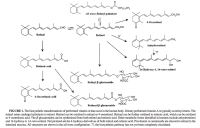@Travis, in reference to my earlier question to you. Grant lays it out like this on p. 31 of PFP:

It makes sense to me, but I'm no biochemistry expert.
And as you can see in my above posts about the casein "deactivation" process described by Goldblatt and Moritz in 1926, it sure seems plausible to me that it had the requisite conditions to oxidize that retinol into retinoic acid.
It makes sense to me, but I'm no biochemistry expert.
And as you can see in my above posts about the casein "deactivation" process described by Goldblatt and Moritz in 1926, it sure seems plausible to me that it had the requisite conditions to oxidize that retinol into retinoic acid.

